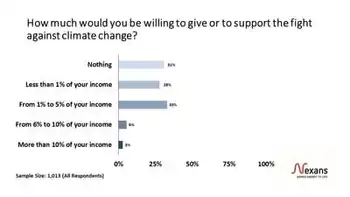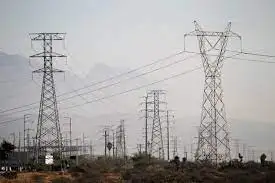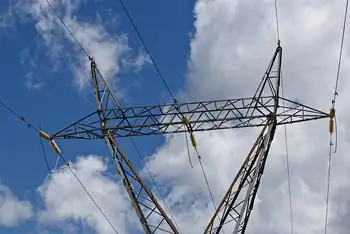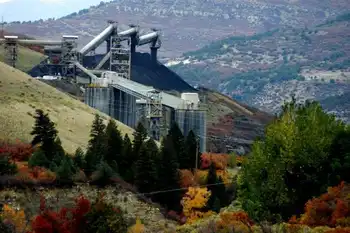Wind power exposed
By HumanEvents.com
High Voltage Maintenance Training Online
Our customized live online or in‑person group training can be delivered to your staff at your location.

- Live Online
- 12 hours Instructor-led
- Group Training Available
It would be anathema to Al Gore and other assorted luminaries touting renewable energy sources which in one giant swoop will save the world from the “tyranny” of fossil fuels and mitigate global warming. And as if these were not big enough issues, oilman T. Boone Pickens’ grandiose plan for wind farms from Texas to Canada is supposed to bring about a replacement for the natural gas now used for power generation. That move will then lead to energy independence from foreign oil.
Too good to be true? Yes, and, in fact, it is a lot worse.
Wind has been the cornerstone of almost all environmentalist and social engineering proclamations for more than three decades and has accelerated to a crescendo the last few years in both the United States and the European Union.
But Europe, getting a head start, has had to cope with the reality borne by experience, and it is a pretty ugly picture.
Independent reports have consistently revealed an industry plagued by high construction and maintenance costs, highly volatile reliability and a voracious appetite for taxpayer subsidies. Such is the economic strain on taxpayer funds being poured into wind power by Europe's early pioneers — Denmark, Germany and Spain — that all have recently been forced to scale back their investments.
As a result this summer, the UK, under pressure to meet an ambitious EU climate target of 20 percent carbon dioxide cuts by 2020, assumed the mantle of world leader in wind power production. It did so as a direct consequence of the UK Government's Renewables Obligations Certificate, a financial incentive scheme for power companies to build wind farms. Thus the UK's wind operation provides the ideal case study — and one that provides the most complete conclusions.
The UK has all the natural advantages. It is the windiest country in Europe. It has one of the continent's longest coastlines for the more productive (and less obtrusive) offshore farms. It has a long-established national power grid. In short, if wind power is less than successful in the UK, its success is not guaranteed anywhere.
But wind infrastructure has come at a steep price. In fiscal year 2007-08, UK electricity customers were forced to pay a total of over $1 billion to the owners of wind turbines. That figure is due to rise to over $6 billion a year by 2020 given the government's unprecedented plan to build a nationwide infrastructure with some 25 gigawatts of wind capacity, in a bid to shift away from fossil fuel use.
Ofgem, which regulates the UK's electricity and gas markets, has already expressed its concern at the burgeoning tab being picked up by the British taxpayer which, they claim, is “grossly distorting the market” while hiding the real cost of wind power. In the past year alone, prices for electricity and natural gas in the UK have risen twice as fast as the European Union average according to figures released in November by the Organization for Economic Cooperation and Development.
While 15 percent energy price rises were experienced across the EU, in the UK gas and electricity prices rose by a staggering 29.7 percent. Ofgem believes wind subsidy has been a prime factor and questions the logic when, for all the public investment, wind produces a mere 1.3 percent of the UK's energy needs.
In May 2008, a report from Cambridge Energy Research Associates warned that an over-reliance on offshore wind farms to meet European renewable energy targets would further create supply problems and drive up investor costs. No taxpayer respite there. But worse news was to come.
In June, the most in-depth independent assessment yet of Britain's expanding wind turbine industry was published. In the journal Energy Policy, gas turbine expert Jim Oswald and his co-authors came up with a series of damning conclusions: not only is wind power far more expensive and unreliable than previously thought, it cannot avoid using high levels of natural gas, which not only will increase costs but will also mean far less of a reduction in carbon dioxide emissions than has been claimed.
Oswald's report highlights the key issue of load factor, the actual power generated compared to the theoretical maximum, and how critical it is to the viability of the wind power industry. In 2006, according to UK government statistics, the average load factor for wind turbines across the UK was 27.4 percent.
Thus a typical 2 megawatt turbine actually produced only 0.54 MW of power on an average day. The worst performing UK turbine had a load factor of just 7 percent.
These figures reflect a poor return on investment. But this poor return is often obscured by the subsidy system that allows turbine operators and supporters to claim they can make a profit even when turbines operate at a very low load factors. So whatÂ’s the bottom line? British consumers are paying twice over for their electricity, funding its means of production, and paying for its use as end users.
Variability is one of the chief criticisms levelled at wind power. When the wind drops or blows too hard, turbines stop spinning, and you get no power. Wind turbine advocates have claimed that this can be avoided by the geographical spread of wind farms, perhaps by creating an international “supergrid.”
But, as Oswald's report makes clear, calm conditions not only prevail on a fairly regular basis, they often extend across the country with the same conditions being experienced as far away as France and Germany. Worse still, says Oswald, long periods of calm over recent decades occurred in the dead of winter when electricity demand is highest.
Periods of low wind means a need for pumped storage and essential back-up facilities. Oswald told The Register online news service that a realistically feasible UK pumped-storage base would only cope with one or two days of low winds at best. As regards back-up facilities, Oswald states the only feasible systems for the planned 25 gigawatt wind system would be one that relied equally on old-style natural gas turbines. As Oswald says, however, the expense of a threefold wind, pump storage and gas turbine back-up solution "would be ridiculous."
The problems donÂ’t end there. The British report highlights what more and more wind farms would mean when it came to installing gas turbine back-ups. "Electricity operators will respond by installing lower-cost plant ($/kW) as high capital plant is not justified under low utilization regimes."
But cheap gas turbines are far less efficient than big, properly sized base-load turbines and will not be as resilient in coping with the heavy load cycling they would experience. Cheaper, less resilient plants will mean high maintenance costs and spare back-up gas turbines to replace broken ones that would suffer regular thermal stress cracking. And, of course, the increasing use of gas for the turbines would have a detrimental effect on reducing carbon dioxide emission — always one of the chief factors behind the wind revolution.
Oswald's report concludes also that all this wear and tear will further stress the gas pipeline network and gas storage system. "High-efficiency base load plant is not designed or developed for load cycling," says Oswald. Critically, most of the issues raised in the independent report have not been factored into the cost of wind calculations. With typical British understatement, Oswald concludes that claims for wind power are "unduly optimistic."
We think they've been blown away.











